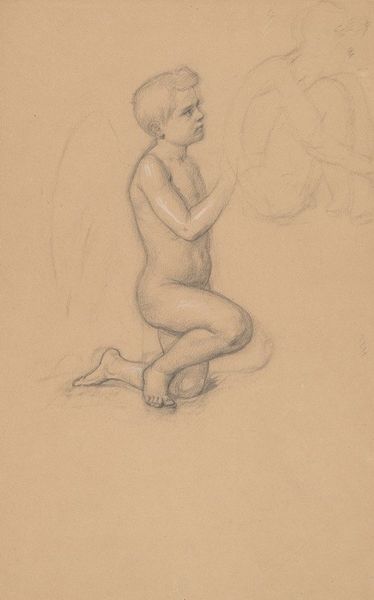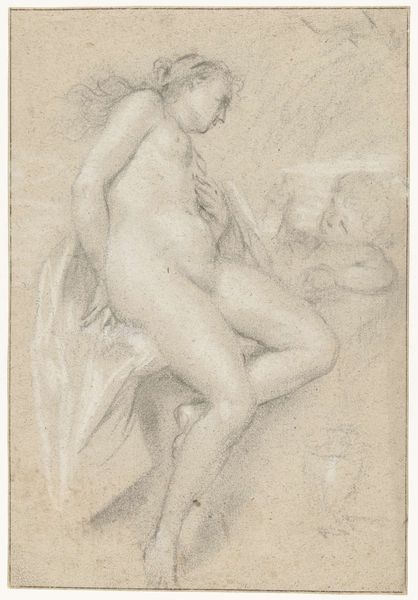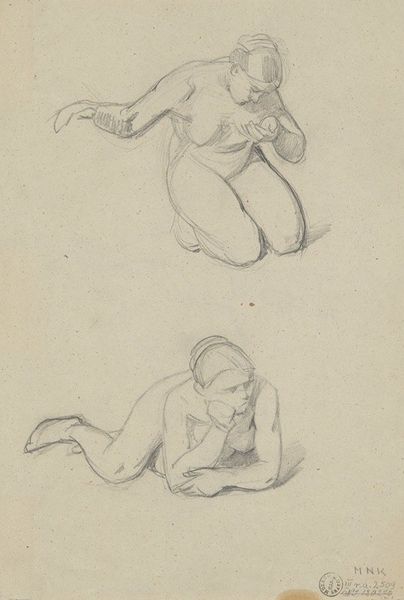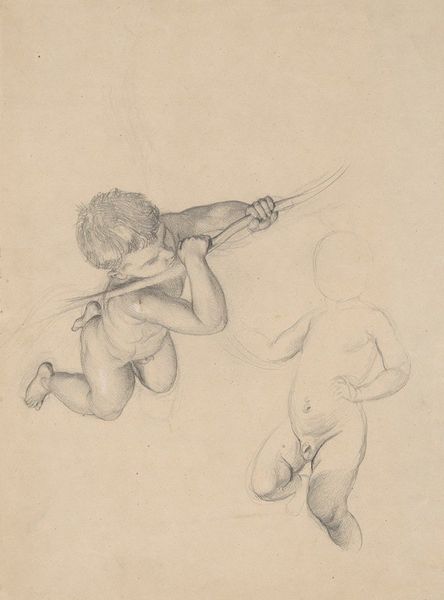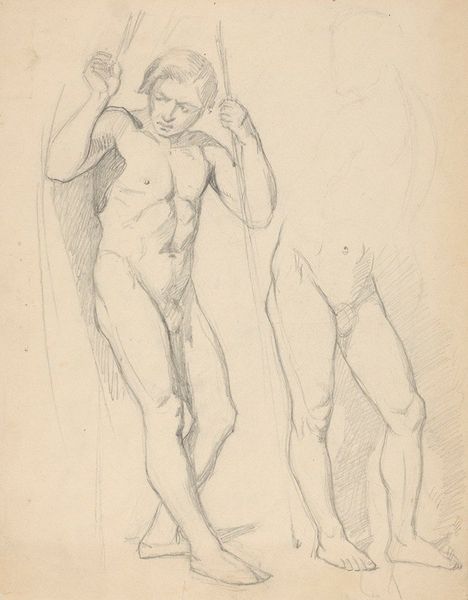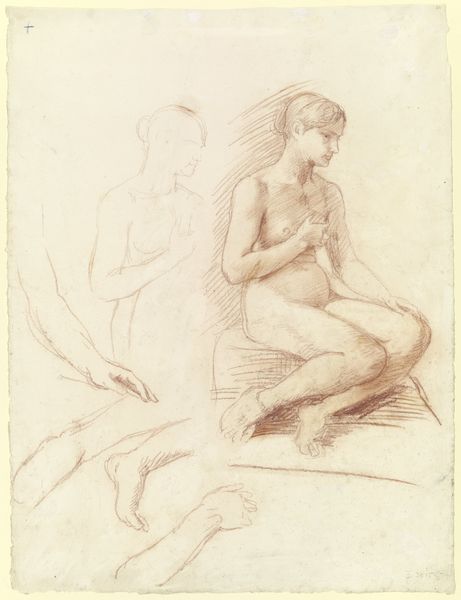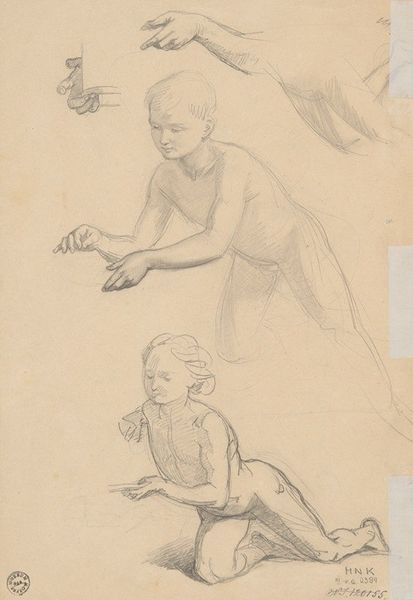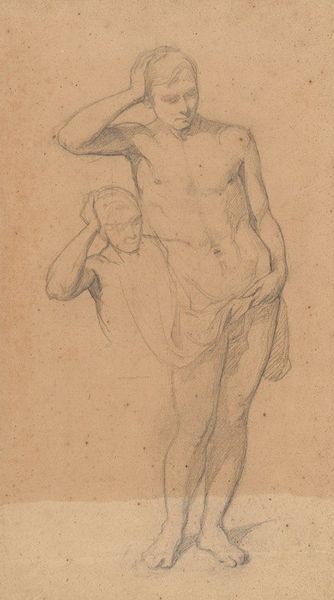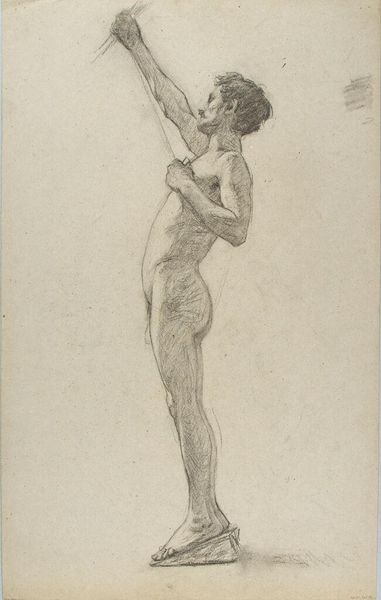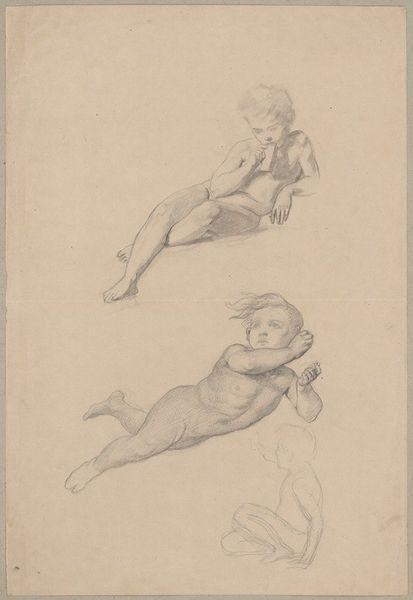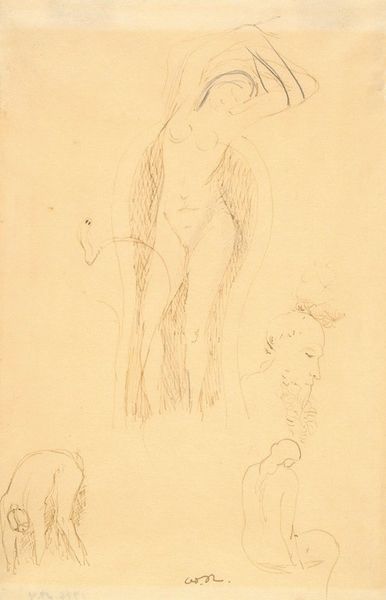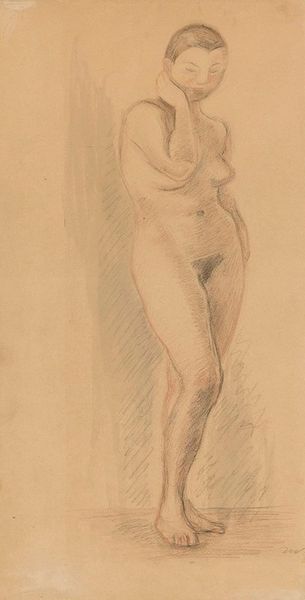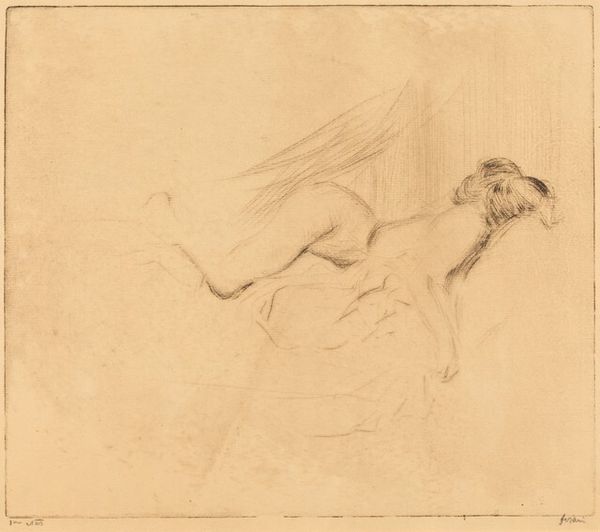
Studies of angels for the painting ‘The Immaculate Conception of the Blessed Virgin Mary’ 1864
0:00
0:00
drawing, paper, pencil
#
drawing
#
pencil sketch
#
paper
#
pencil drawing
#
pencil
#
portrait drawing
#
academic-art
Copyright: Public Domain: Artvee
Editor: We’re looking at Jòzef Simmler's preparatory drawing from 1864, “Studies of Angels for the Painting ‘The Immaculate Conception of the Blessed Virgin Mary.’” It's a pencil drawing on paper, and I’m struck by how ethereal the figures seem, almost like they're fading into the background. What stands out to you in this sketch? Curator: The drawing immediately suggests a formal investigation of form and light. Note how Simmler utilizes the pencil to create nuanced tonal variations, building volume and delineating the anatomical structure of the figures. Consider the placement of each figure, generating an asymmetrical yet balanced composition. Editor: I see what you mean about the balance. It's interesting how one figure is much more defined than the others. Is there any symbolism in which figure is more defined? Curator: From a formalist perspective, the level of detail dictates a visual hierarchy rather than relying upon symbolic intent. This focal point captures the eye. Furthermore, consider the application of the medium itself. How the density of graphite creates a sense of depth. Editor: It is fascinating to view the different techniques and level of details put into one subject. Would he necessarily use these figures in his completed paintings? Curator: Indeed, these 'studies' display the pure function in service to form rather than iconographical significance. A crucial difference. Editor: I had not noticed the details and hierarchy within Simmler’s form. Curator: Understanding these techniques provides a better sense for artistic structure.
Comments
No comments
Be the first to comment and join the conversation on the ultimate creative platform.
